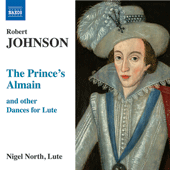The second
of our “one work montages” features a work that is quite unique, both
in its format and its very sparse discography: the only piano concerto by the
late 19th– early 20th century virtuoso pianist Ferruccio
Busoni.
Busoni was
the prototypical Renaissance man - composer, pianist, conductor, editor,
writer, and teacher. A child prodigy, largely taught by his clarinetist father
(his mother, a pianist, was also a professional musician), he began performing
and composing at the age of seven. Busoni composed in his early years in a late
romantic style, but after 1907 he developed a more individual style, often with
elements of atonality. His piano compositions include original works and
transcriptions of the works of others, notably Johann Sebastian Bach. In
that sense, one can think of Busoni in the same vein as Liszt, Godowsky,
and other piano virtuosi who composed “showpieces” for their own use.
His other
compositions include chamber music, vocal and orchestral works, and also
operas, one of which, Doktor Faust, was left unfinished at the time of
his death. Busoni died in Berlin at the relatively young age of 58.
Busoni’s
Piano Concerto in C major is one of the largest works ever written in this
genre. The concerto lasts around 70 minutes and is in five movements; in the
final movement a male chorus sings words from the final scene of the verse
drama Aladdin by Adam Oehlenschläger, a Danish playwright who’s a
contemporary of Goethe.
The first
performance of the concerto took place in Berlin on November 10, 1904, at one
of Busoni's own concerts of modern music. Busoni was the soloist, with Karl
Muck conducting the Berlin Philharmonic Orchestra and the Choir of the
Kaiser-Wilhelm-Gedächtniskirche. The reviews were decidedly mixed, some being
filled with outright hostility or derision. Apart from the immense demands
required of the soloist and the large forces needed, there is a further
difficulty that can affect performances of this work: the role of the soloist.
As Busoni
himself wrote, piano concertos tended to be modelled after either Mozart
or Beethoven. In Mozart's case, the concerto centres around the spotlit
virtuoso composer-performer, who appears to spontaneously create the work
before us, on-stage. The orchestra mostly provides a background accompaniment.
But with Beethoven, it’s the reverse - the work is often conceived in symphonic
terms; the piano takes the secondary role, reflecting on or responding to ideas
that have already been introduced by the orchestra (the fourth piano
concerto being the exception).
Busoni
combined both these perspectives in the Piano Concerto: a huge work of
symphonic proportions which presents exceptional challenges for the soloist,
who is often required to incorporate a glittering cascade of notes into the
overall orchestral sound. This self-abasement of the familiar 19th-century
heroic soloist's role thus requires careful consideration of balance in
performance.
It seems to
have been Beethoven who first included a chorus in a concertante work with
piano and orchestra (his Choral Fantasy, Op. 80). since then only a
handful of works have been scored for similar forces, including Daniel
Steibelt's Piano Concerto No. 8 and the Piano Concerto No. 6 by Henri
Herz which also have a choral finale. Adam Oehlenschläger's verse drama Aladdin,
or the Magic Lamp was first published in Danish in 1805. The play has a
number of parallels with the works and ideas of Goethe, such as the
Faust-figure of the wicked magician Noureddin who takes advantage of Aladdin's
youth and inexperience to get hold of the wonderful lamp; Goethe was also much
preoccupied with Plato's philosophy, including his theory of Forms and the
Parable of the cave.
During his
travels in Germany in 1805-6, Oehlenschläger spent several months in Weimar in
the company of Goethe and his closest circle of friends. He used the
opportunity of his daily visits to read out Aladdin to Goethe, freely
translating from the Danish. At the time, Goethe was in the process of
completing the final version of Faust, Part 1.
As I stated
earlier, Busoni worked late in life on an opera based on Faust, but was equally
taken with this early German version of Aladdin and planned to adapt it as a
one-evening work. However, Busoni never completed his adaptation of Aladdin,
although he did compose music for the final chorus in the magic cave; this made
its way into the Piano Concerto.
Since its
premiere in 1904, the concerto has seen relatively few performances, owing to
the large orchestration, complex musical texture, the use of a male chorus, and
the staggering demands put on the soloist. Consequently, its discography is
sparse (refer to this Wikipedia
entry), and as was the case last time with the Messiaen Turangalila
symphoiny, we turn to a vintage stereo recording from the mid-1950’s featuring
the late John Ogdon who, like Marc-André Hamelin today, had a reputation in
exploring arcane (and technically challenging) piano repertoire by the likes of
Alkan and Busoni.
The
conductor in this performance, Daniell Revenaugh, studied piano with Ferruccio
Busoni's pupil Egon Petri from 1951 until Petri's death in 1962. He later
founded the Busoni Society, and has amassed a large and important collection of
Busoni and Petri materials. This recording of the Busoni concerto won the
Deutscher Schallplatten Preis, the Montreux Award, a Grammy nomination, and has
remained in the EMI catalogue for decades.
I think you will love this music too!






:format(jpeg):mode_rgb():quality(90)/discogs-images/R-1695184-1238380924.jpeg.jpg)
